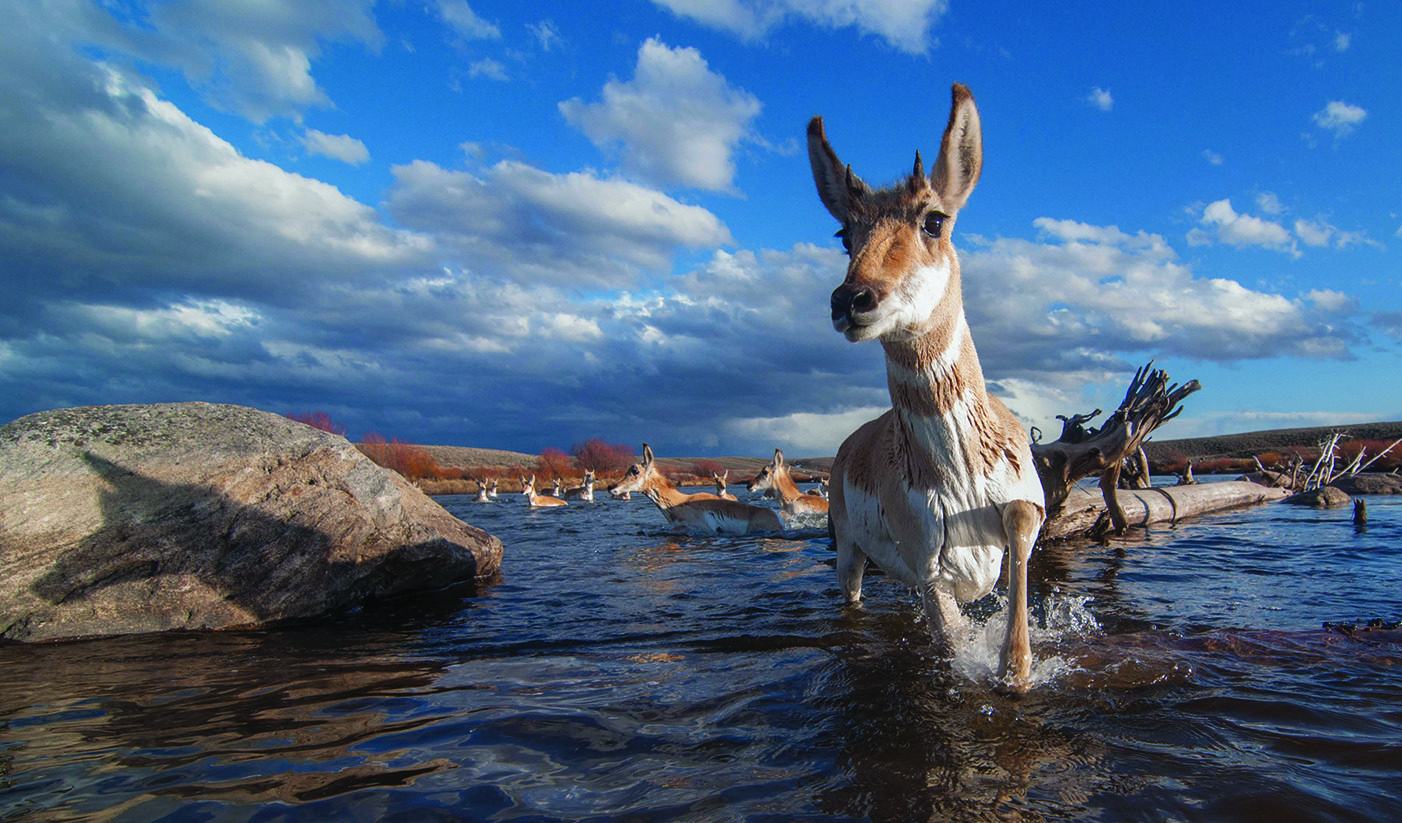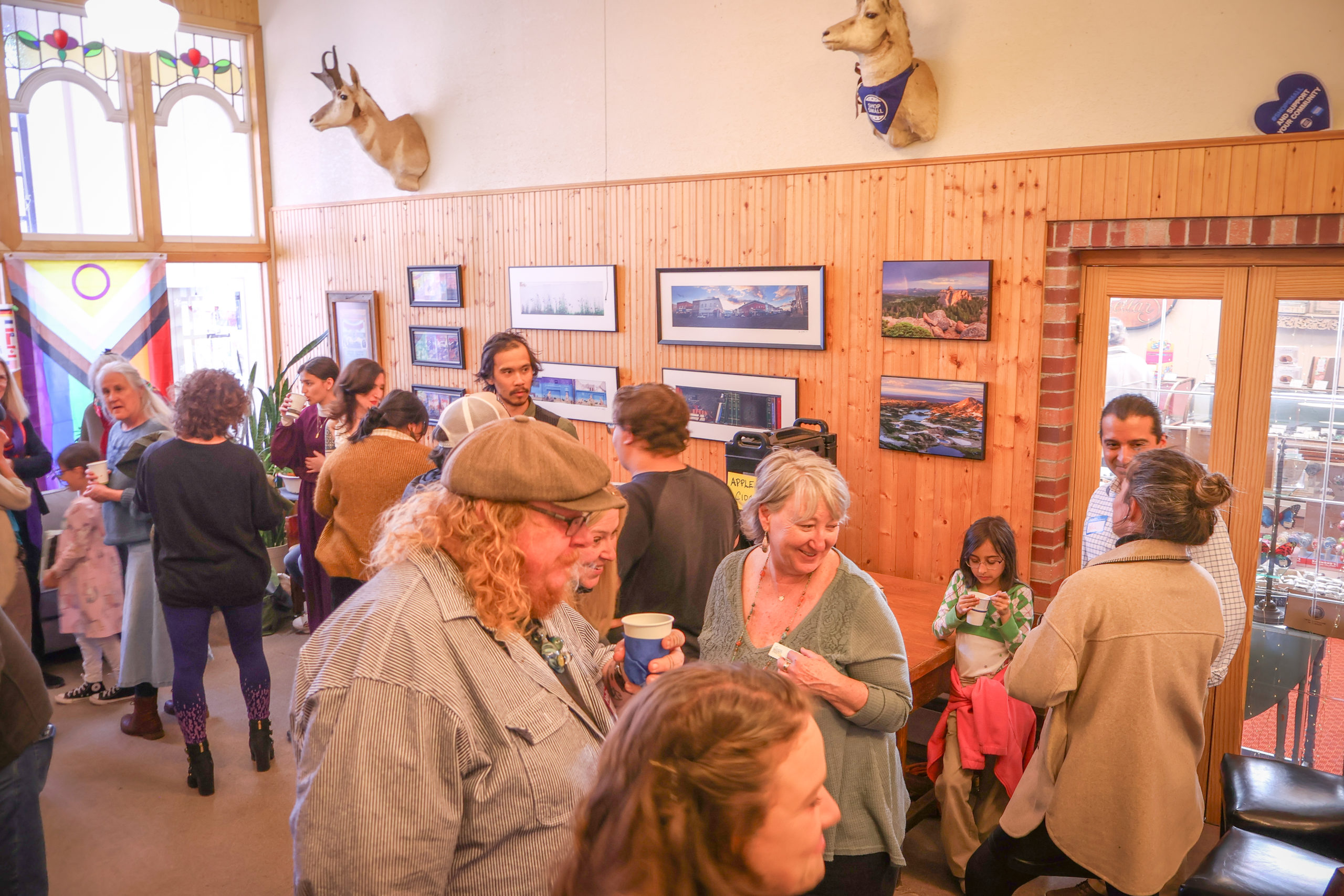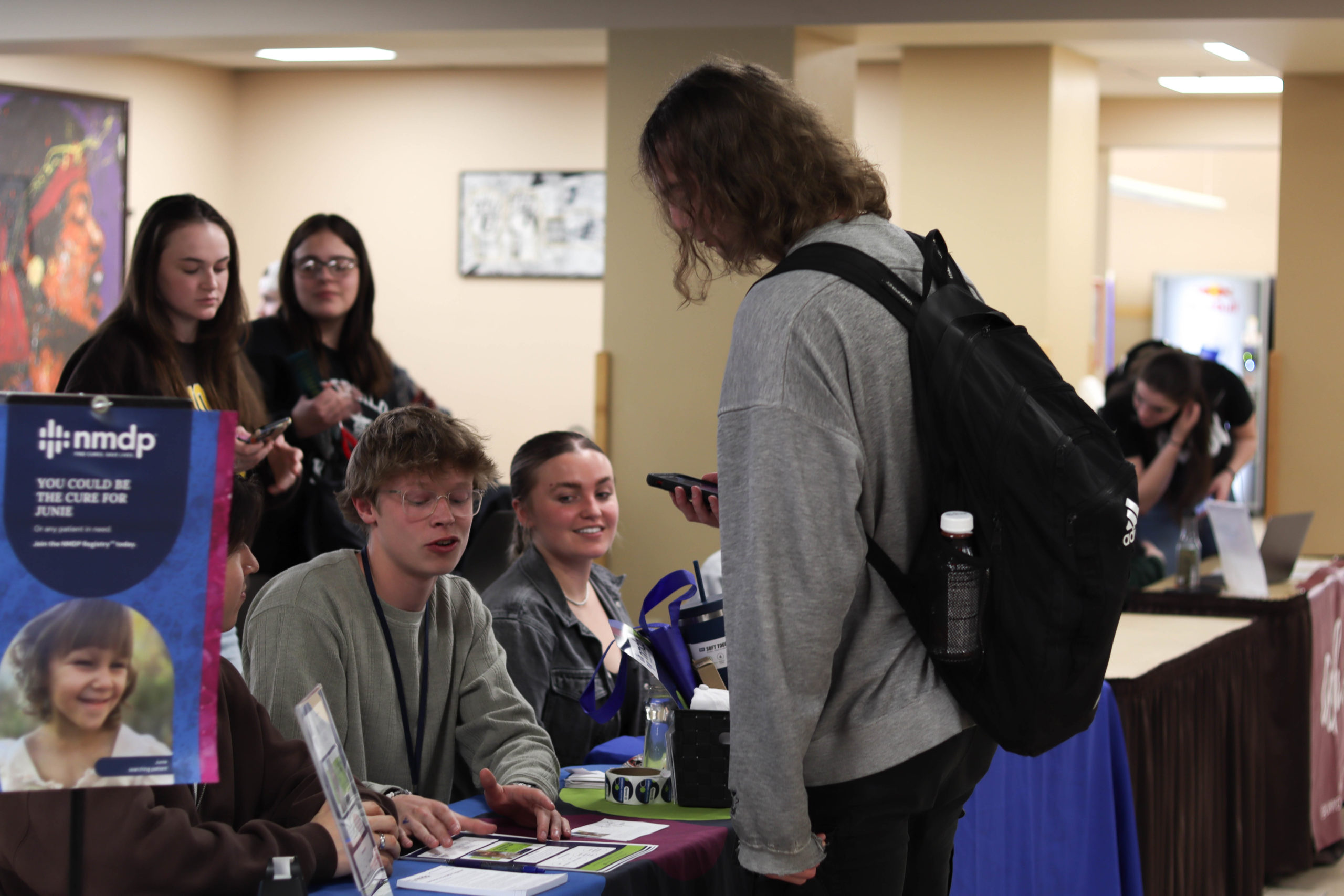For Wyoming residents, pronghorn are a part of everyday life, however, the hundred mile migration pattern they follow is largely unknown by most.
A decade ago, little work had been done on documenting migrations in Wyoming or migrations in general. That is until Emilene Ostlind set out to write her masters’ thesis in creative writing on western Wyoming’s pronghorn migration.
Ostlind planned to follow the migration from the Green River Basin to Grand Teton National Park on foot, about a 100-mile trek. At that time, Joe Riis was an undergraduate student at UW. Riis’ passion for wildlife photography and interest in the migration led him to accompany Ostlind on her journey.
Ostlind and Riis collaborated on the project for the better part of two years. Riis’ ability to capture images of the pronghorn up close was a relatively new phenomenon. Previous images were mostly of the animals running from an aerial view taken with a helicopter or from a great distance to avoid spooking them. Riis utilized camera traps to capture up-close images.
“Joe was kind of inventing how to photograph migrations through that project,” Ostlind said.
The project was a major success for the two. It became a cover story in High Country News featuring Ostlind’s writing and Riis photos. The story won several awards and the pair was invited to multiple speaking engagements including talks in Banff, Alberta and Stanford University.
Fast-forward to 2017 and the two have built their careers around the project. Ostlind has contributed her work to multiple publications and founded Western Confluence magazine. Riis has become a successful photojournalist who has traveled across the world on assignment with National Geographic.
Despite his work taking him abroad, Riis in continually pulled back to Wyoming.
“I love Wyoming, it’s not where I grew up, but it’s where I’ve spent the majority of the past 15 years. I’ve been fortunate to have the opportunity to travel for my work and see some of most remote places on the planet, from Uganda to Argentina to Mongolia and up to the Arctic, but what we have right here in the middle of the USA, in western Wyo, is as wild as it gets,” Riis said. “This region is biodiverse and full of life, and that’s why I return. I love it here, it’s where I like to hang out, and it’s where I work”.
His work in Wyoming has contributed to his new book, “Yellowstone Migrations.” The book, which is published by Braided River, a non-profit organization, is a sort of conservation campaign. Much of Riis’ work illustrates the relationship between the migrating animals and human development. Though it wasn’t his initial goal to capture this relationship, it became a key part of his work.
“It’s the reality, these are working landscapes where people live, but the migrations are still happening here in Wyoming,” Riis said. “It’s still wild, and my hope is that it stays that way. Both people and wildlife on the landscape, working together.”
The photojournalist is visiting Laramie Thursday to give a presentation on his book at the Gryphon Theatre at 7:00.
Riis said returning to Laramie is of special importance to him.
“It’s such an honor to return to Laramie to see friends and share work from the past decade since I finished school,” Riis said. “Feels like somewhat of a homecoming for me. I very much enjoyed my time in Laramie, one of the best periods of my life so far.”
The program will feature a reading of the book’s main essay, read by its author, Emilene Ostlind. Riis will follow her reading with a presentation of his own that will showcase new, never before seen footage of his work.
Afterward, Riis will hold a book signing. “Yellowstone Migrations” can be purchased for $29.95, plus tax, and a 25 percent discount will be offered to students with their UW IDs. Beer and snacks will be available for purchase with recycling and compost services provided by the Zero Waste Program.
Ostlind said “Yellowstone Migrations” encompasses the “conservation process” of science meeting livelihoods and impacting public consciousness.
Riis echoes this sentiment.
“My goal is to be a voice for the wild planet, because wildlife and wild places are voiceless in our culture,” Riis said. “And I want to shine a light on the people who keep it wild; the wildlife researchers, ranchers, conservationists, sportsmen and outdoor communities, and everyone else who truly value wildlife.”



